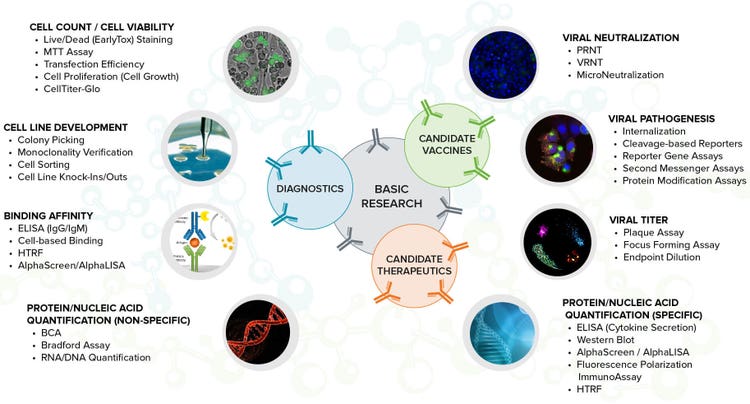Common applications in COVID-19 and infectious disease research including vaccines, therapeutics and diagnostics
Global research efforts are focused on understanding the SARS-CoV-2 virus in order to develop potential therapies for COVID-19 including:
- vaccines
- recombinant proteins, including monoclonal antibodies
- repurposing of drug molecules already approved, or in clinical trials, for other viruses
- developing diagnostic and research tools using antibodies
Here we've addressed common applications in infectious disease research including cell line development, binding affinity, viral neutralization, viral titer and more.

Accelerating study of viral infection and therapeutics
In this on-demand webinar, you will learn:
- How to integrate microplate reader detection and high-content screening workflows for detection of viral infectivity, investigation of viral mechanism of action, and screening of therapies
- How to use high-throughput screening to analyze multiple parameters across RNAi, therapeutic vaccine, and antibody screens
- How to determine viral infectivity TCID50 through fluorescence, luminescence, or absorbance-based microplate detection platforms
- How to establish robust assays across multiple platforms for high-throughput detection of viral infectivity with microplate detection and high-content imaging applications

SARS-CoV-2 key applications
Learn more about how our technology and solutions can help support your research of COVID-19 cellular responses and vaccine development.
Latest Resources
Resources related to COVID-19 cellular responses and vaccine development
Systems to accelerate your COVID-19 cellular response and vaccine development
We have validated and compliant laboratory solutions including microplate readers, microplate washers, biopharma and cellular imaging systems to meet your research needs.
